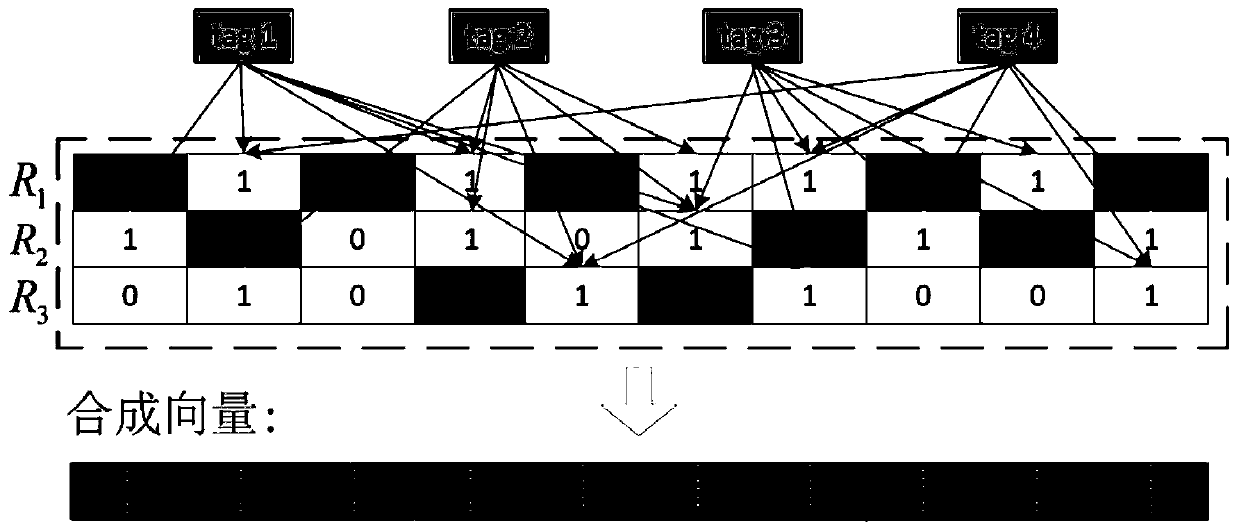Lost label detection method of RFID system
A label detection and label technology, applied in the field of radio frequency identification and the Internet of Things, can solve the problems of low detection efficiency of lost labels and shorten response time, and achieve the effect of shortening response time, improving detection efficiency and high deactivation efficiency.
- Summary
- Abstract
- Description
- Claims
- Application Information
AI Technical Summary
Problems solved by technology
Method used
Image
Examples
Embodiment
[0069] Example: see figure 1 , the reader maps 4 known tags into a 10×3 grid table through 2 hash functions and 3 random seeds. Then the i-th 2-bit binary number in the composite vector represents the row coordinate of the bit whose first value is "0" in the i-th column in the grid table. The reader treats parameters i > and resultant vectors are broadcast to all labels. Each label that receives broadcast information uses 2 hash functions and 3 random seeds R i , i=1, 2, 3 calculate respectively (H 1 (ID, R i ) mod f 1 ), (H 2 (ID,R i ) mod f 1 ) to determine your own identity. That is to say, each label uses at most 2×3 results as index values to find a binary number with a length of 2 in the synthetic vector, so as to judge whether it is an unknown label. If it is an unknown label, then in the subsequent detection time remain silent.
[0070] see figure 2 , the reader first maps all known hash functions with labels R to a length f 2 =10 in the expected frame v...
PUM
 Login to View More
Login to View More Abstract
Description
Claims
Application Information
 Login to View More
Login to View More - R&D
- Intellectual Property
- Life Sciences
- Materials
- Tech Scout
- Unparalleled Data Quality
- Higher Quality Content
- 60% Fewer Hallucinations
Browse by: Latest US Patents, China's latest patents, Technical Efficacy Thesaurus, Application Domain, Technology Topic, Popular Technical Reports.
© 2025 PatSnap. All rights reserved.Legal|Privacy policy|Modern Slavery Act Transparency Statement|Sitemap|About US| Contact US: help@patsnap.com



